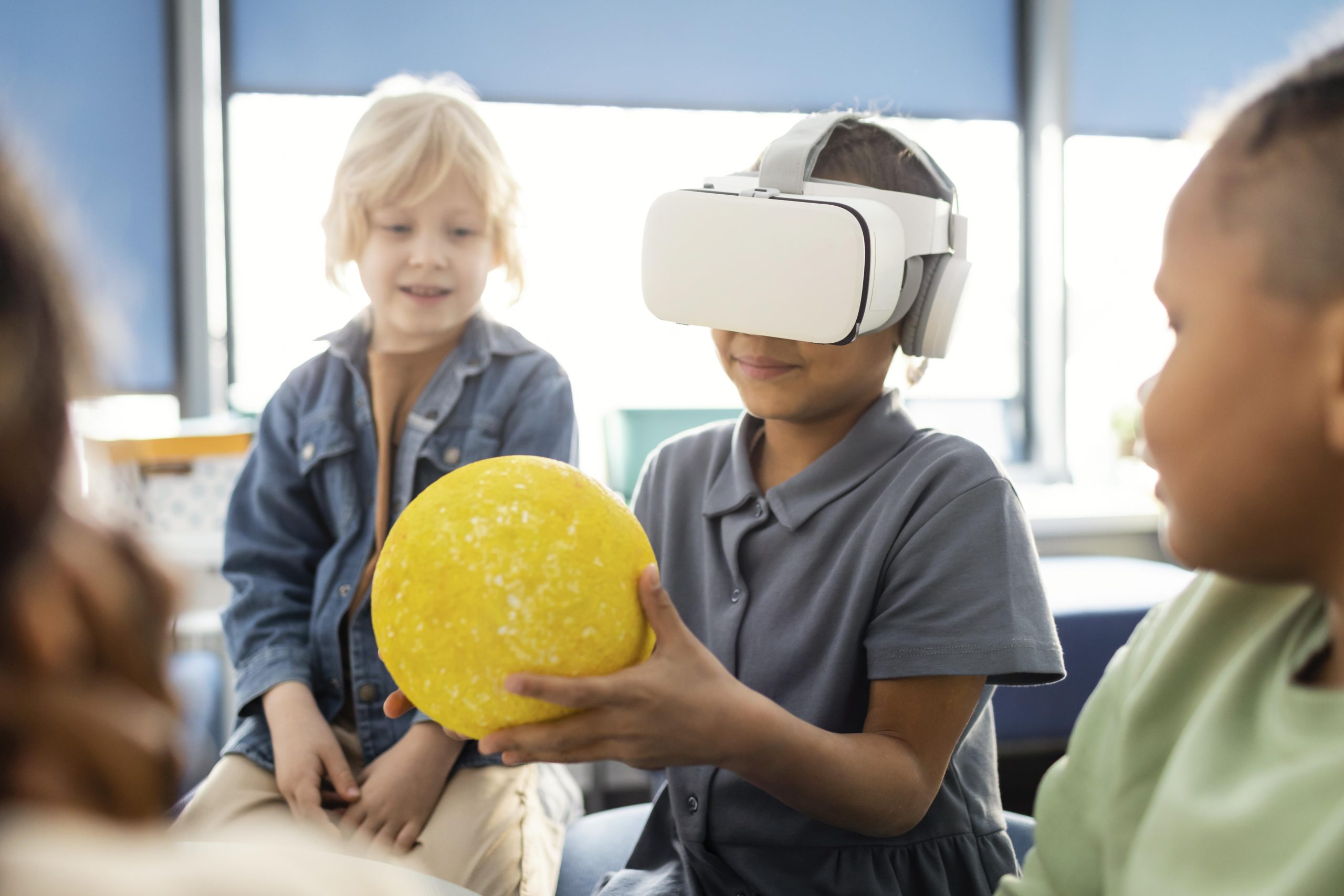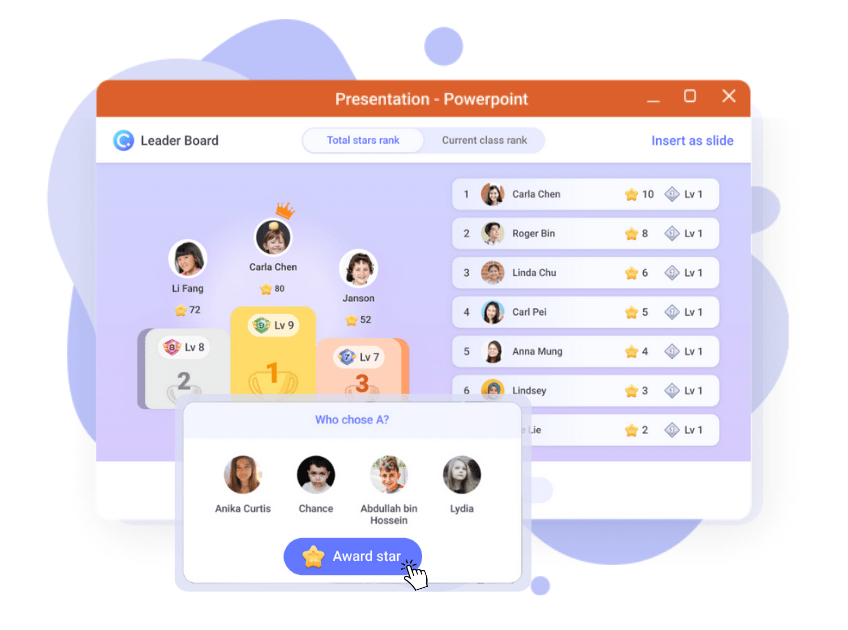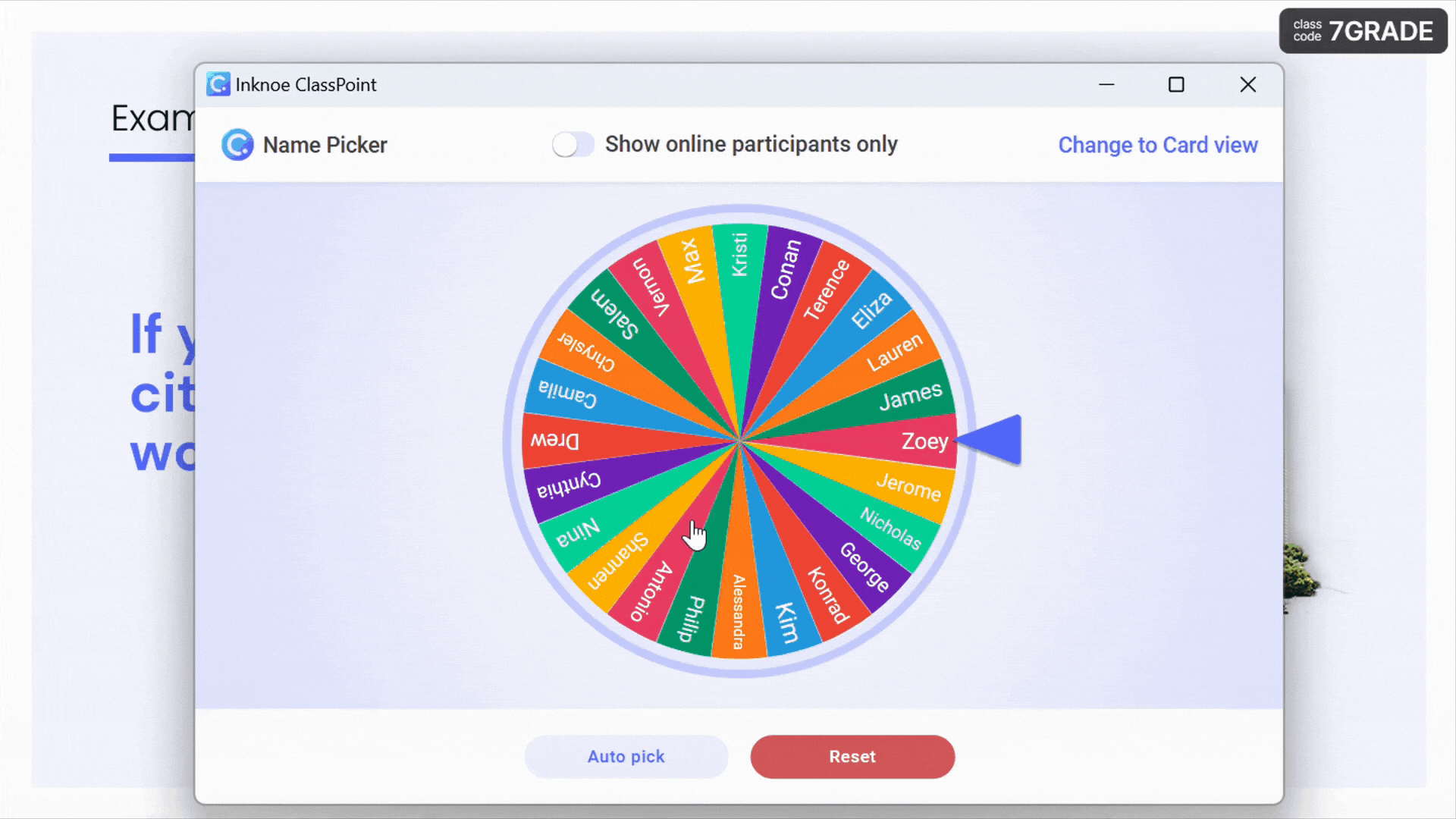Thanks to technology, traditional classrooms are undergoing a transformative shift. Today, in 21st century classrooms, educators are embracing innovative education technologies like Virtual Reality (VR) and Augmented Reality (AR) to create dynamic and engaging learning experiences. VR and AR in education have the potential to revolutionize and motivate learning by fostering a deeper understanding of complex concepts, igniting student curiosity, and promoting collaborative learning.
But how exactly do these technologies work, and what makes them so effective?
This article delves into the unique strengths of both VR and AR in education, exploring how they can be used across various situations to create engaging lessons, foster deeper understanding, and ignite a love of learning in students.
We’ll also explore the challenges of integrating these technologies and offer practical steps educators can take to make VR and AR a powerful asset in their teaching toolbox.
The Key Differences Between VR and AR in Education

Virtual Reality (VR) and Augmented Reality (AR) are revolutionizing education by unleashing the power of imagination and transforming classrooms into boundless learning spaces. But what sets these two technologies apart?
VR: Immersing Students in a World of Learning
VR creates a fully digital environment, transporting users into a computer-generated world. Donning specialized headsets equipped with motion sensors, students become active participants in the virtual world. They can explore breathtaking landscapes, conduct scientific experiments in simulated labs, or even walk alongside historical figures.
VR experiences are highly interactive, allowing users to navigate virtual environments, manipulate objects, and engage with the simulations in a way that static textbooks simply can’t replicate. This allows for incredibly interactive learning experiences, where students can explore virtual environments and manipulate objects within them.
AR: Bridging the Gap Between Physical and Digital
AR takes a different approach when it comes to immersion. Instead of transporting you entirely into a digital world, AR seamlessly integrates digital elements with the physical world you see around you.
Unlike VR, AR doesn’t require specialized equipment. Most commonly, AR experiences are accessed through smartphones or tablets. AR apps overlay digital information onto a user’s real-world view, creating an interactive learning experience. Users can manipulate these digital objects, access additional information through their devices, and explore the world around them in a whole new way.
VR and AR offer captivating avenues for exploration and discovery, each with its own unique approach to altering perceptions and enhancing experiences. These technologies are redefining the way we interact with our surroundings and learn from them.
Benefits and Applications of VR and AR in Education

How VR Shines in Education
- Experiential Learning: Students actively participate by exploring historical landmarks, delving into scientific phenomena, or practicing real-world skills, all within a virtual environment.
- Simulation and Training: VR offers safe and controlled environments for students to practice skills or scenarios otherwise inaccessible or risky, like surgical procedures or flight simulations.
- Visualizing Abstract Concepts: Complex concepts become more tangible through VR’s visual representations and interactive experiences.
- Virtual Field Trips: Classrooms transcend physical limitations, embarking on VR field trips to historical sites, natural wonders, and more.
- Virtual Laboratories: Students conduct virtual experiments and explore scientific phenomena in a safe, controlled environment.
How AR Can Empower Educators
- Interactive Learning Resources: AR enriches traditional materials by providing digital overlays, animations, and additional information when students scan textbooks, worksheets, or posters.
- Engaging Games and Challenges: Gamified AR apps make learning fun and entertaining. Students can participate in interactive challenges, scavenger hunts, or collaborative games that promote problem-solving and teamwork.
- Collaborative Learning: AR fosters collaboration by allowing students to interact with each other and virtual objects in shared spaces, promoting communication, cooperation, and peer learning.
- Visualizing the Invisible: AR excels at making the invisible visible. Students can view the internal workings of a machine, explore the microscopic world, or witness the flow of electricity – all overlaid on the real world.
- Bringing Textbooks to Life: AR apps can overlay 3D models, animations, and interactive elements onto textbooks, making static diagrams and historical figures come to life.
By integrating VR and AR, educators can create dynamic and engaging learning experiences that cater to different learning styles and ignite a love of learning in students.
VR vs. AR in Education: Choosing the Right Tool in Your Classroom
VR and AR, while both powerful tools for education, have distinct strengths that make them ideal for different learning scenarios. Here’s a breakdown to help educators choose the right technology for the job.
| Feature | VR | AR |
| Strengths | – Deep immersion and exploration – Makes complex concepts relatable – Fosters a sense of wonder – Interactive virtual environments | – Seamlessly blends physical & digital worlds – Interactive learning experiences Collaborative learning environment – More accessible and cost-effective |
| Weaknesses | – Expensive headsets and potentially powerful computers required – Motion sickness and eye strain – Limited collaboration within VR environments | – Limited deep immersion compared to VR – Reliant on the physical environment – Learning experience may not be feasible in all situations |
The key takeaway? VR and AR are complementary technologies, not replacements for each other. By understanding their strengths and weaknesses, educators can choose the right tool to enhance specific learning objectives and create a truly enriching educational experience.
Challenges and Considerations for VR and AR in Education
While VR and AR offer immense potential to revolutionize education, there are challenges and considerations to address for successful implementation.
1. Cost and Accessibility
The upfront cost of VR headsets can be a significant barrier for schools, particularly those with limited resources. However, advancements in technology are leading to more affordable options like mobile VR headsets that utilize smartphones. Cloud-based VR platforms are emerging, allowing access to VR experiences without requiring individual headsets for each student. For AR, leveraging existing technology like smartphones and tablets makes it a more accessible solution.
2. Steep Learning Curve
Another significant consideration when implementing VR and AR in education is the learning curve associated with these technologies. Both educators and students may face challenges in understanding how to navigate VR and AR environments or interact with digital content effectively. This learning curve can potentially slow down the adoption process and hinder the integration of VR and AR into the curriculum.
3. Integration into Existing Lesson Plans
Simply incorporating VR and AR technology into classrooms isn’t enough. The key lies in effectively integrating them into existing curricula and developing engaging lesson plans that leverage their unique strengths. Align virtual experiences with curriculum standards to provide opportunities for active exploration and inquiry, and scaffolding learning experiences to support students’ understanding.
4. Student Privacy
As with any technology used in educational settings, student privacy is a paramount concern. Data collected by VR/AR applications needs to be carefully managed and protected to ensure student privacy is respected.
5. Content Quality Control
The effectiveness of VR/AR experiences heavily relies on the quality of the content. Educators need to be selective about the VR/AR applications they choose, ensuring the content is accurate, age-appropriate, and aligned with learning objectives.
Taking Action: A Guide for Educators Integrating VR and AR

The potential of VR and AR in education is undeniable, but translating this potential into reality requires thoughtful planning and action. Here are some steps educators can take to successfully integrate VR and AR into their classrooms:
- Curriculum Alignment: Don’t just jump into the latest technology and carefully consider how VR and AR can enhance existing curriculum objectives. Identify specific learning goals where VR’s immersive experiences or AR’s ability to overlay information can create a more engaging and effective learning experience.
- Start Small & Experiment: Don’t feel overwhelmed by the vast possibilities. Begin by incorporating VR and AR in short bursts or for specific topics within a lesson. Experiment with different applications and see what resonates with your students. Here are a few easy entry points:
- Google Cardboard (low-cost, smartphone-powered VR)
- CoSpaces Edu (free VR experiences & creation tools with a premium subscription)
- Nearpod (free VR field trips & AR features)
- Merge Cube (holographic cube with free AR experiences & purchasable content)
- Quiver Education (AR coloring pages come to life)

- Leverage Gamification: Gamification elements and game-based learning strategies can enhance engagement and motivation within VR and AR experiences. Integrate game mechanics such as points, badges, leaderboards, and challenges to create interactive and immersive learning environments that encourage exploration, experimentation, and mastery.
- Embrace AI-Powered Learning: Some VR and AR experiences incorporate machine learning and AI-powered features that personalize learning and provide students with feedback. Look for applications that adapt to a student’s pace and learning style, offering hints or adjusting difficulty levels.
Stay ahead of the curve with this comprehensive A-Z guide on AI and its impact in the education sector.
- Utilize EdTech tools for Enhanced Learning: Incorporate other EdTech tools and platforms alongside VR and AR to enhance learning experiences. Integrate Learning Management Systems (LMS), educational apps, multimedia resources, and interactive digital content to complement VR and AR experiences and provide additional support for diverse learning needs.
- Seek Professional Training & Development: There are many professional development opportunities available for educators looking to integrate VR and AR into their classrooms. Workshops, online courses, and conferences can equip educators with the necessary skills and knowledge to leverage these technologies effectively. Incorporating a gradual introduction can also help students build confidence and develop proficiency in using VR and AR tools for learning purposes.

- Promote Collaboration and Social Learning: Use VR and AR to facilitate collaboration and social interaction among students. Design collaborative projects, group activities, and shared experiences that encourage teamwork, communication, and peer learning within virtual and augmented environments. Provide opportunities for students to collaborate, problem-solve, and co-create content together.
Classroom teaching is made more fun and collaborative with ClassPoint's Name Picker and Grouping features.
- Continuously Assess and Refine: As with any new teaching method, monitor the effectiveness of your VR/AR integration. Use student feedback and assessment results to refine your approach and identify areas for improvement. This ensures you’re maximizing the learning potential of these technologies.
Final Thoughts
Virtual Reality and Augmented Reality are not just mere trends; they hold the potential to revolutionize education by creating immersive, interactive experiences that ignite curiosity, deepen understanding, and foster a love of learning. Students can explore historical landmarks, conduct virtual experiments, and visualize complex concepts in ways that traditional methods simply can’t replicate.
While challenges like cost and accessibility exist, advancements are paving the way for more affordable and user-friendly VR and AR experiences. The key lies in effectively integrating these technologies into existing curriculum and developing engaging lesson plans that leverage their unique strengths.
Educators and parents, we encourage you to explore the possibilities of VR and AR in education, as well as education technology tools to further enhance the learning experience. With thoughtful planning and a commitment to innovation, VR and AR can unlock a world of learning opportunities for students of all ages.
